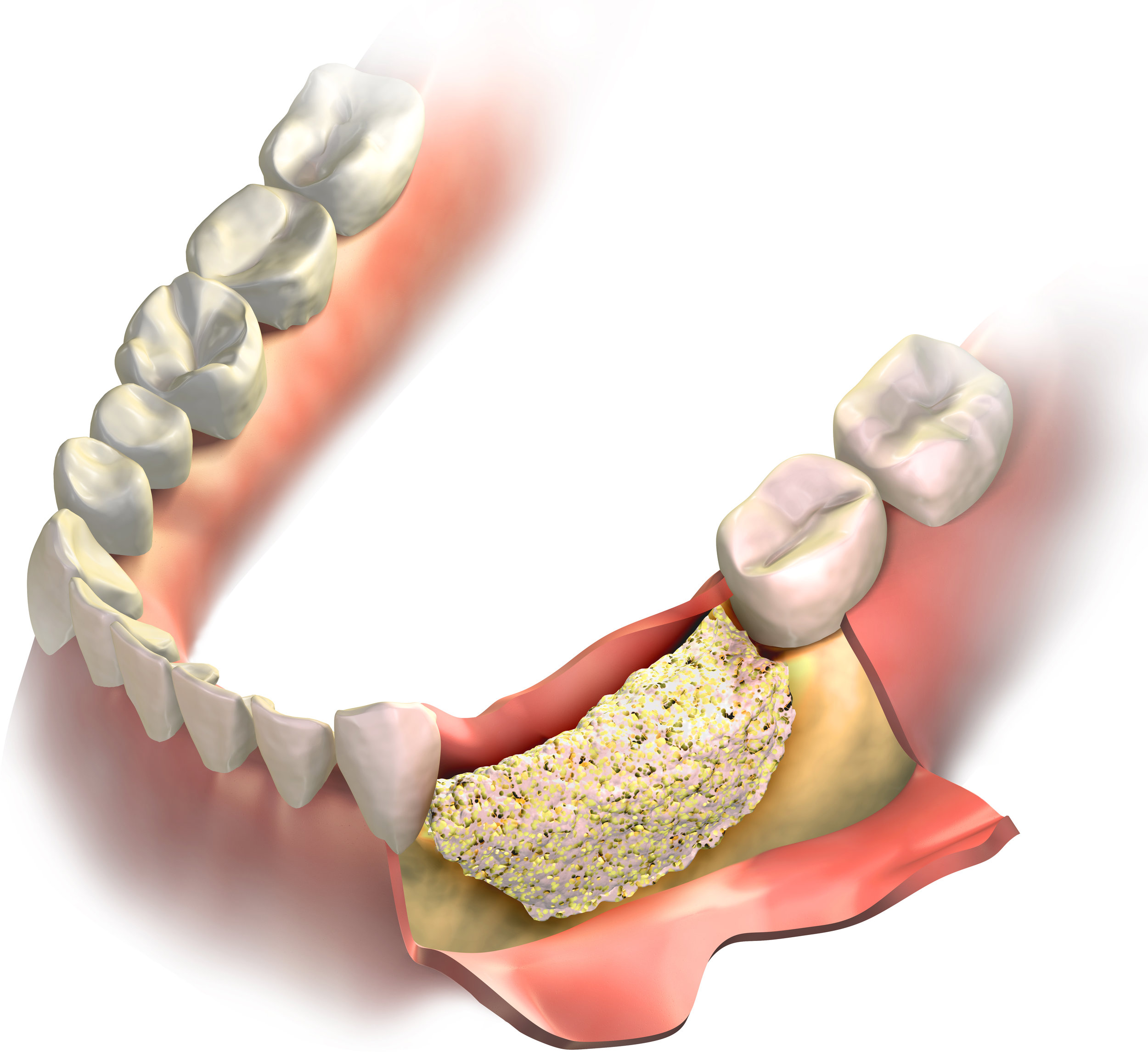What is Bone Grafting?
Bone grafts are used to replace bone destroyed by periodontal diseases, tooth extractions, or improperly fitted dentures.
Types of Bone Grafts
➤ Autogenous Bone Grafts
Autogenous bone grafts, also known as autografts, are your own bone, taken from somewhere else in the mouth. Autogenous bone grafts are advantageous in that the graft material is live bone, meaning it contains living cellular elements that enhance bone growth.
However, one downside to the autograft is that it requires a larger surgical area.
➤ Allogenic Bone
Allogenic bone, or allograft, is bone harvested from a human cadaver, then processed using a freeze-drying method to extract the water, cellular components, and proteins. Unlike autogenous bone, allogenic bone cannot produce new bone on its own. Rather, it serves as a framework or scaffold over which bone from the surrounding bony walls can grow to fill the defect or void. Disease transmission associated with properly harvested allogenic bone has not been reported.
➤ Xenogenic Bone
Xenogenic bone is derived from another species, usually a cow. The bone is processed at very high temperatures to avoid the potential for immune rejection and contamination. Like allogenic grafts, xenogenic grafts serve as a framework for bone from the surrounding area to grow and fill the void.

